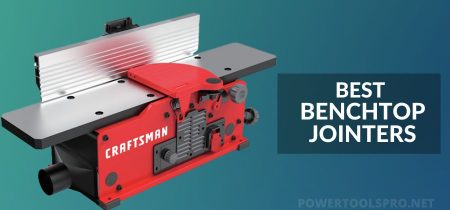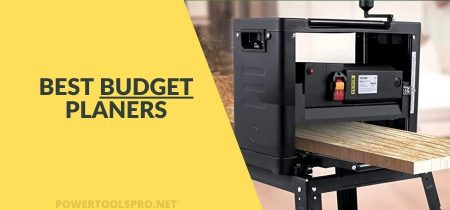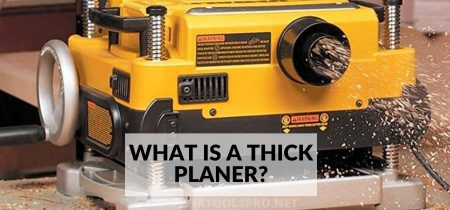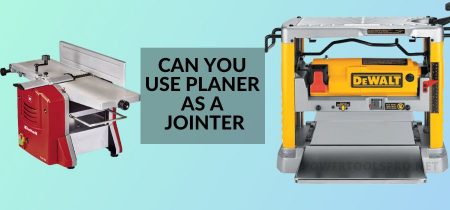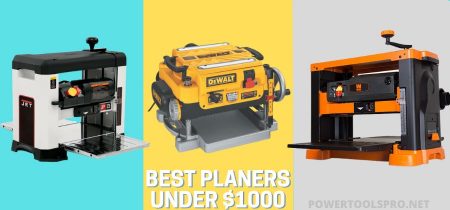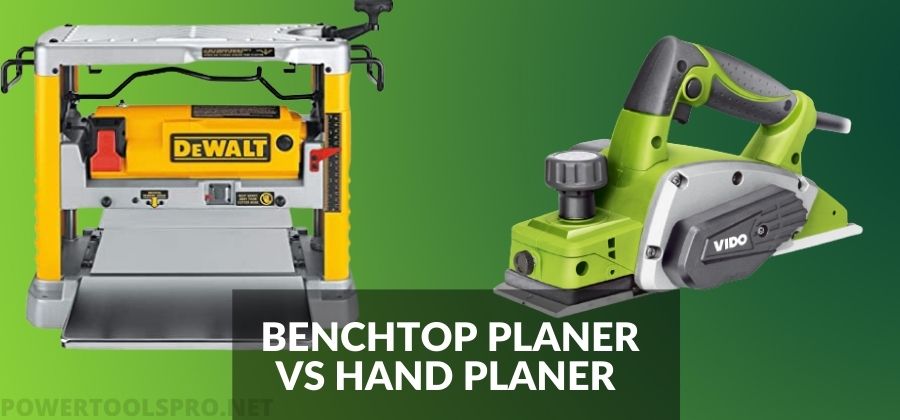
A planner is a handy and reliable equipment that woodworkers and professionals use to bring a refined and finished touch to their projects.
You can find multiple types of planers on the market that will provide a uniform thickness to your woodwork.
However, there is always a debate between Benchtop vs. Hand Planer. Which one is the best and why? Thickness planer vs. Hand Electric Planer is a tough choice to make. However, I will recommend using a bench planer as it contains extra features and more power, and it is easy to use as compared to a hand planer.
If you are browsing for suggestions to guide you in picking the best wood thickness planer available. Or if you want to compare Benchtop and Hand Planer.
Whether you’re a newbie or an expert woodworker, this article will give you information on selecting the best thickness planer while keeping your budget in mind.
What is Benchtop Planer?
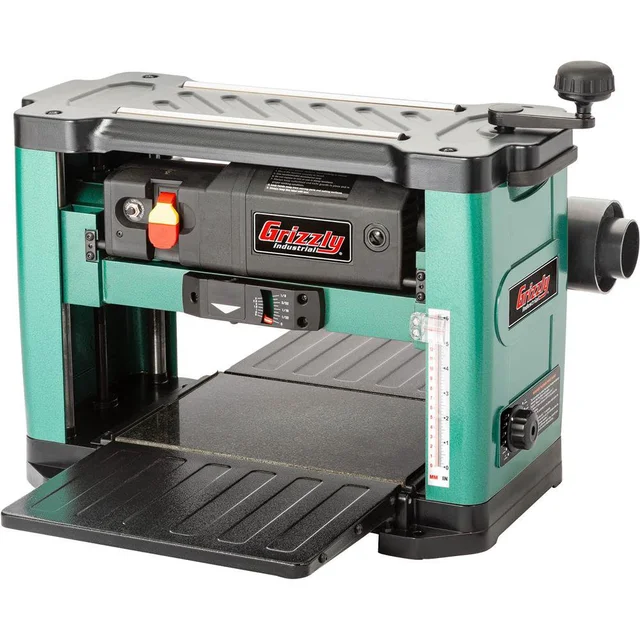
Benchtop planers are power equipment in the form of boxes with rotating blades inside that let you change the thickness of a piece of wood.
They are sometimes referred to as thickness planers or wood planers. By running the wood through the planer, microscopic layers from the surface of the workpiece are removed, much like on a wood lathe. Up until the wood matches your standards, you can remove layers by modifying the cutting height.
These planers, as compared to hand planes, provide a uniform thickness that enables you to make level tabletops, joinery, and generally better projects. An old, weathered piece of wood’s beautiful grain can also be seen when using a benchtop planer.
Some of the exciting features of this benchtop planer are also mentioned below.
Exciting Features of Benchtop Planer:
Gauge and stops: A gauge that shows how much wood will be removed with each pass is found on many planers. These gauges potentially prevent overeating, contributing to tear-out or deeper damage. We particularly appreciate the adjustable preset depth stops, which come in handy when planning various project sections to the same thickness and prohibit planning a board any thinner than the desired thickness.
Blade Style:
Straight and spiral are the two available types of blades, also called knives. Straight knives provide rough and inconvenient outcomes because of their long-safety razor. However, spiral knives on the other hand provide consistent results as they consist of multiple smaller knives to perform the job.
Dust collection:
Most wood planer produces a mess of dust while cutting the woods. This mess can be avoided or controlled using a dust vacuum or dust collector. Mostly benchtop planers come with this feature to control loads of wood chips generated during the process.
Work power:
power is not an issue for any wood planer. All the good quality wood planers are capable to handle 1⁄8 “-deep cuts in 12”-wide hard maple and oak.
Motor power:
The work should be able to be completed with enough power from the motor. However, the specific projects you are working on will determine how much electricity is needed. We require a motor with between one and one and a half horsepower when working with softer wood (such as cedar or pine). Look for a 2–3 HP planer if working with hard materials (like maple or oak). Choose a planer that has enough horsepower to complete your project.
Cutting capacity:
the size of the workpiece you need to plane will determine the cutting capacity (or planning width) you have. This planer will have a maximum capacity of 12 to 13 1/2 inches.
Where to use your benchtop planer?
- It can perform flawlessly on a piece of lumber.
- It can be used best on wood with rough edges or poorly formed.
What is Hand Planer?
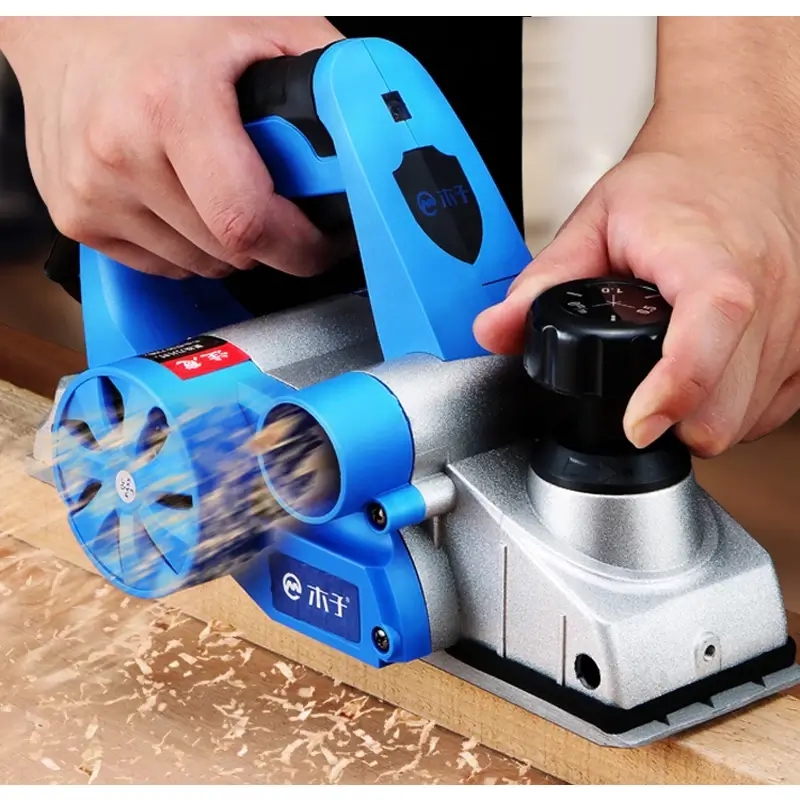
A tool for shaping wood is a hand planer. It is most frequently used to flatten, thin, or give a rough piece of lumber a smooth finish. A blade attached to a body called a hand planer is often used to smooth off the surface of a piece of wood.
The body of the hand planer features an adjustable blade that flattens and smooths the wood. Original hand planers were manual in use.
However, with the latest technology trends, companies have also introduced Electric Hand planers. Modern hand planers contain various new parts and functions compared to their ancestors. Most of them have a mouth, an iron, a lever cap, a tote, a knob, a lateral adjustment lever, and a frog.
An electric hand planer often referred to as a power hand planer, has a similar appearance to the manual version except that the blade or blades are mounted onto a revolving drum instead of stationary.
Features of Handheld Planer:
Blade angle:
A plane’s blade angle greatly affects the types of materials it can cut. Block planes, which present their blades to the wood at a lower angle, are ideal for cutting end grain because they slice rather than scrape the board.
For working exotic timbers and burrs with intricate grain patterns, blades offered at very high angles, such as those on scraper planes and some Chinese planes, are appropriate because they minimize tear-out.
Unless otherwise stated, the cutting edge of most hand planes is presented to the wood at a 45-degree angle, enabling the plane to work most hardwoods and softwoods effectively.
Blade thickness:
The rigidity of the blade depends on its thickness. The blade may slightly flex when cutting if it is especially thin, which will result in chatter.
The surface of the wood will be left with a subpar, nearly ridged finish as a result. The finish is notably smoother when using thicker blades since they are more resistant to this flexing.
Body of planers:
Both wooden and metal-bodied planes have benefits and drawbacks. Metal-bodied planes are significantly heavier and far more wear-resistant than their wood counterparts, especially when working with more rough woods.
When planning for extended periods, the wooden body’s lighter weight is advantageous, and the hardwood sole won’t mark or harm the work the way a metal-bodied plane might.
The workhorse of the workshop is metal-bodied planes, but wooden planes excel at giving any wood a particularly beautiful finish.
Frog type:
The frog is an integral part of the hand planers. Since it is the only plane component that holds the blade, the frog must be considered when purchasing any hand plane.
The plane’s performance will ultimately depend on how well the frog is constructed and how well it fits into the plane’s body. The two most popular frog designs today are Bailey and Bedrock. Most hand planes have a Bailey frog that rests on top of a machined surface on the plane’s body.
This fully adjustable frog is secured in place by two screws that can only be accessed after the plane iron assembly has been taken apart.
When to use your hand planer?
- To produce a smoother wood surface
- To reduce the size of a blocked door’s swelling corners
- To pay more attention and with more precision to little wood pieces
- To cut radial curves
- For slope-plane symmetry construction
- On adjacent wooden surfaces like tables, doors, or frames
Can you use a Hand planer instead of a Bench planer?
The hand planer is preferable if you’re working with smaller parts, want a nice finish, don’t want to use a lot of power, and want something portable.
However, the bench planer is a better choice if you intend to plan many large boards, need to do so quickly, need a lot of power, want precise depth adjustment with loads of other options, and if portability is not your main issue.
Benchtop Planer vs Handheld Planer
Precision can be achieved on smaller woodworking projects with the hand planer. On the other hand, the bench planer is essential for any sizeable woodworking project. They both make excellent tools and have special advantages.
Power and Speed:
If you need to work on smaller components, hand planers are useful. With manual hand planers, all of the power is provided by your own muscles, which is obviously limited and makes everything take a very long time to complete.
The electric hand planers are the next in line, and they have motors with several horse powers, usually between two and five. With relatively small parts, this power level and the motor’s assistance provide higher speed and usability. However, overall, bench planers are more powerful. They produce an end product considerably more quickly because they have more power and can handle larger components.
Application:
The material size you may deal with will also depend on the sort of planer you have. Hand planers are best suited for smaller jobs due to their lack of power and speed. An electric hand planer is appropriate for slightly larger parts because of its powerful motor.
Electricity usage:
The only power used when using a manual hand planer is your own, represented by the calories you consume. Electric hand planers on the other hand use more electricity to generate more power.
However, with its huge rotating blades and motorized rollers, the bench planer is by far the largest tool and uses more energy than hand planers.
Portability:
Hand planers, either manual or electric, are far more portable than bench planers in terms of portability. While bench planers aren’t portable at all, they are useful because they can quickly and accurately handle huge stock.
Ease of use:
Despite needing a lot of muscle strength, hand planers are quite simple to use. Because they move slowly, achieving accuracy is simple without cutting off too much at once.
Electric hand planers are significantly simpler to use than manual hand planers because they can handle larger materials and work much faster.
However, on the other hand, Most people would agree that the bench planer is the most user-friendly of all of these possibilities. This is due to the fact that all you actually need to do is pass the wood through; the machine takes care of the rest.
Bench planers, in contrast to hand planers, have a significantly wider depth adjustment range than electric hand planers, allowing for more precise cutting.
Therefore, a bench planer is required if you need to make cuts of varying depths and need to make frequent modifications.
Price:
You must be wondering how much a hand planer will cost, you can easily get one for less than $50, and occasionally even for less than that.
For a good model, electric hand planers can cost up to $200 or $300.
On the other side, bench planers can cost anywhere from a few hundred to a few thousand dollars, depending on the model, because of the increased size, power, and extra functions they contain.
Extra features
There aren’t many more functions available for hand planers, and even those that do have manual depth adjustments needed. Easy depth adjustments are possible with electric hand planers, but only to a limited extent.
The bench planer is the only practical choice to consider if you’re searching for features like dust management, dust extraction, precise adjustments with a wide range, and feed and out feed tables.
Is a handheld planer worth it?
The major benefit of owning a hand planer is that you may use it on pre-installed woodwork anywhere and at any time.
However, finishing huge boards or tabletops with a hand planer takes time and isn’t very accurate. So, choose the planer according to the project you will start for larger woodwork hand planers are not recommendable.
Are benchtop planers worth it?
For do-it-yourself furniture projects, bench planers are portable tools that serve a specific purpose and can help you save significant money. These amazing wood planers are worth investing your time, money and energy.
Conclusion:
At the end of the day, the project you’ll be working on is what you should focus on the most. Hand planers are fantastic for more complicated projects or tasks requiring a lot of control.
Bench planers, on the other hand, are suggested for larger projects where you’ll require powerful tools. You must decide which type of planner will serve you best; each has its own advantages.
